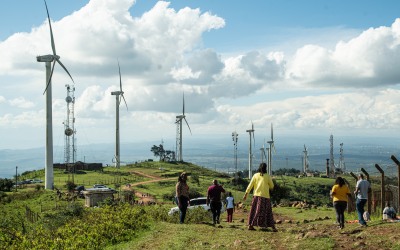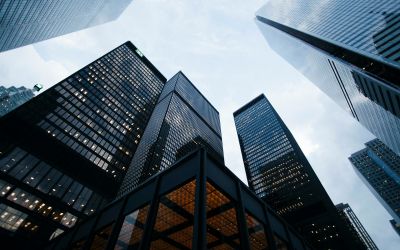Vivek Bapat on how SAP enables customers to transform their businesses to reduce carbon emissions
Ahead of the Sustainable Innovation Forum 2021, Climate Action caught up with Vivek Bapat, Senior Vice President, Purpose and Sustainability Marketing at SAP, to discuss how SAP enables customers to transform their businesses to reduce carbon emissions.

Ahead of the Sustainable Innovation Forum 2021, Climate Action caught up with Vivek Bapat, Senior Vice President, Purpose and Sustainability Marketing at SAP, to discuss how SAP enables customers to transform their businesses to reduce carbon emissions.
How does SAP enable customers to increase their overall resource productivity and transform their businesses to reduce carbon emissions?
At its heart, sustainability is a resource constraint problem. SAP has been providing leading technologies to help manage resources for over 50 years. Our vision is to enable customers to successfully transform their businesses into intelligent, sustainable enterprises. Collaborating closely with our customers and partners, we help to measure and optimise their material, financial, and energy flows across their end-to-end business processes.
SAP Product Footprint Management is our latest solution that enables companies to calculate carbon footprints for their products and across the value chain. It considers the entire product lifecycle, helping companies disclose their products’ environmental footprints to regulators, customers, and enables them to make their products more sustainable.
SAP Product Footprint Management is part of a new portfolio of sustainability-specific business applications that deliver transparency and measurement capability across the supply chain, allowing companies to move toward lower carbon emissions and more sustainable operations.
How will SAP drive efficiency and innovation for reducing long-term greenhouse gas (GHG) emissions, and can you tell us a bit more about how this strategy will play out?
We believe that transparency drives action. Our strategic vision is a world of zero emissions, zero waste and zero inequality as we see these topics are inextricably connected.
We know that the path to a low-carbon future is circular. Close to 45% of global emissions are a direct consequence of the material wastes from industrial age supply chain systems. To operationalise sustainability into the core, we help embed sustainability data, insights and action into these core mission critical business processes so they can inherently become more sustainable. Reduction in supply chain waste and emissions can ultimately have a cascading effect to mitigate the rise in global inequalities as well.
Our Sustainability Performance Management suite includes the SAP Responsible Design and Production solution to ensure product designers can make sustainable choices from initial product concepts to production; the SAP Product Footprint Management solution to track sustainability through a product lifecycle; and the SAP Sustainability Control Tower solution to provide end-to-end visibility.
Sustainability is directly linked to SAP’s purpose: to help the run world better and improve people’s lives. Since we started our sustainability journey, we took a holistic approach - as exemplar and enabler. We want to lead by being a role model for sustainable business, operations, and practices. By doing that, we learn and fulfil the role as an enabler. We want to provide customers with solutions that enable them to meet their sustainability challenges and opportunities.
This dual responsibility allows us to learn from our own experiences to the benefit of our customers. Our vision is that customers can continue engaging with SAP by deploying existing solutions with built-in sustainability features, co-innovating new or industry specific solutions and leveraging SAP’s ecosystem and partners.
As one of the world’s leading producers of software for the management of business processes, what do you think are the biggest challenges with regards to data quantity and data quality?
Up-to-date, accurate and consistent sustainability data is vital to steer a company toward a sustainable intelligent enterprise. We see so many companies lacking the visibility into end-to-end business processes and supply chains, which leads to inaccurate footprint numbers that might be challenged by stakeholders. We are committed to helping businesses identify the carbon impact at the beginning of the product lifecycle and proactively make adjustments to lower this impact, rather than learning of the impact after the product has been produced.
Natural carbon offset and carbon capture have both proved very effective methods of reducing carbon emissions, but is it really possible to reach carbon neutrality with these methods alone? What other, if any, technologies/innovations will be required?
At SAP, we look at Climate Strategy across five imperatives. In order to thrive in a low carbon economy and be resilient to climate change, companies will need to work across these imperatives to transition towards their low carbon paths.
These imperatives go beyond natural carbon offset and carbon capture, to include change in underlying businesses, how they operate and the technologies they use:
- Technologies that will bring transparency and enable customers to report on 1,2,3 scope emissions across an enterprise’s activities remain the foundation for all corporate climate strategies.
- Mitigation: Reduce emissions in your span of control. Interventions in business-as-usual activities are needed to reduce emissions.
- Use carbon credits and markets to get to zero and buy and sell low carbon products and services.
- Reset your business model as part of the energy transition.
- Adapt to protect your business from a changing climate. Resilience will be both financial, as the external cost of carbon is increasingly priced, and physical. Physical resilience will be essential to avoid disruptions to operations and supply chains.
Digital technology has tremendous power in preventing GHG carbon emissions, where will SAP focus their attention?
When companies embed emissions data into underlying business processes, leaders can drive real change by making conscious decisions across the entire value chain. That is what scales the transition to low emission pathways, and SAP is uniquely positioned to drive this change throughout collaborative, intelligent and sustainable business networks.
By integrating data across all solutions that govern production processes with master data from business applications such as SAP S/4HANA, our software can calculate the environmental impact of various production scenarios. For example, a cookie company can choose its source for chocolate based both on the cost of the raw material as well as on its carbon footprint.
Our data-driven approach lets businesses embed sustainability comprehensively and gain actionable insights across the entire value chain to enable companies to transition to low-carbon business processes. Taking a differentiating approach, SAP enables businesses to proactively identify the carbon impact at the beginning of the product lifecycle instead of reactively after a product has been produced.
This not only equips companies with the insight to reduce carbon emissions across their value chains but can enable data exchange with customers, suppliers and business partners — driving transparency across a company’s scope 1, scope 2 and scope 3 emissions.
How did you incorporate sustainability into your own career path, and why does this topic hold meaning for you personally?
Growing up in India, as I did, it would have been hard not to feel the pull of purpose and the importance of sustainability. They went hand-in-hand with my belief in the opportunity of education and the importance of equal access.
For me, the seeds around purpose were planted very early on. My parents were both educators and my mother dedicated her life to teaching in a school for underprivileged children. Given the socio-economic conditions, she would sometimes use her own salary to buy books and supplies for her students who couldn’t afford them. She frequently visited their homes, cajoling the parents of many of the young girls to continue to keep their daughters in school for a chance to a better life.
When I was growing up, there wasn’t as much awareness or commitment to environmental responsibility. Each year when we visited our relatives in Mumbai, I could see and smell the enormous industrial waste from food, chemical and petroleum plants nearby. This created huge wastelands and contaminated water and sewage around which poverty, disease and crime took root. Three members of my extended family succumbed to untimely deaths from cancer and tumors believed to be caused by these types of environmental hazards.
Education became a major catalyst in my upbringing. Starting at age five, I attended a Jesuit school in Pune, where its motto was to create “Men for others” and the focus was on holistic education. While a majority of students at the school were from some of the wealthiest families in the city, everyone was always treated uniformly. That experience taught me very early in life that education – in all its forms - can become the great equalizer.
My personal experiences over time as an evolving global citizen have helped me ensure that we are truly empathetic, authentic and pragmatic in all of the actions we take. For me, purpose and sustainability isn’t a slogan or a tag-line. It is personal.
SAP are speaking at the Sustainable Innovation Forum 2021, to join them register here now.




_400_250_s_c1.png)

